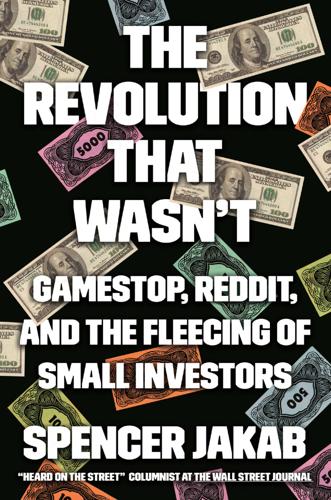
The Revolution That Wasn't: GameStop, Reddit, and the Fleecing of Small Investors
by
Spencer Jakab
Published 1 Feb 2022
Instead, they spent a great deal of energy probing the suspicious-sounding arrangement that allows Robinhood and others to offer free trading, which brought them at least one step closer to the problem. Payment for order flow went from being an arcane technical aspect of the brokerage business to a supposed smoking gun overnight when Robinhood suspended trading of the meme stocks. Surely someone very bad had come up with it. Well, that part is at least right. The practice was pioneered in the early 1990s by the late Ponzi schemer Bernard Madoff. As recently as 2004, a prominent lawyer sent a detailed complaint to the SEC urging it to ban payment for order flow for options trading. “This practice distorts order routing decisions, is anti-competitive, and creates an obvious and substantial conflict of interest between broker-dealers and their customers,” he wrote.[23] The man’s employer?
…
Public.com says it doesn’t “encourage day trading, nor do we push margin credit on new investors.” That sounds great, and discouraging day trading is commendable, but there is nothing inherently bad about payment for order flow. The problem is that it helped lower the barrier to entry so that Wall Street could attract a new group of small-dollar speculators while being able to boast that it was doing something noble by “democratizing finance.” The meme-stock squeeze probably wouldn’t have happened without payment for order flow, but the finger-pointing that followed wound up chasing shadows. Orders routed to a wholesaler like Citadel or Virtu that make those payments are “dark”—orders flow into and out of their big black boxes and all you get to see are the results—whereas those that go to an actual stock exchange are “lit.”
…
BACK TO NOTE REFERENCE 25 Tom Maloney, “Citadel Securities Gets the Spotlight,” Bloomberg Markets, April 6, 2021. Tom Maloney and Sally Bakewell, “Citadel Securities Reaps Record $6.7 Billion on Volatility,” Bloomberg, January 22, 2021. BACK TO NOTE REFERENCE 26 iainclarke7, “Mythbusting: Payment for Order Flow & Tipping,” All of Us blog post, March 13, 2021, www.allofusfinancial.com/post/mythbusting-about-payment-for-order-flow-tipping. BACK TO NOTE REFERENCE 27 Peter Rudegeair and Orla McCaffrey, “Robinhood Raises $1 Billion to Meet Surging Cash Demands,” The Wall Street Journal, January 29, 2021. BACK TO NOTE REFERENCE 28 Chapter 20: January 29, 2021 Julia Verlaine and Gunjan Banerji, “Keith Gill Drove the Reddit GameStop Mania: He Talked to the Journal,” The Wall Street Journal, January 29, 2021.
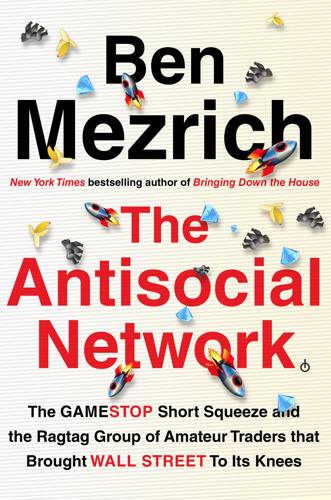
The Antisocial Network: The GameStop Short Squeeze and the Ragtag Group of Amateur Traders That Brought Wall Street to Its Knees
by
Ben Mezrich
Published 6 Sep 2021
She wasn’t from Silicon Valley, she was from Chicago, and she was there to talk nuts and bolts. And as little as Vlad wanted to talk payment for order flow, he’d want to discuss her specialty even less. Not because it involved some uncomfortable truth that would be hard for the public to swallow about how Robinhood made its money; but because what Emma did for a living was, to an outsider, torturously boring. Emma had no problem admitting it to anyone who asked: clearing was the least glamorous part of finance, and one that very few people actually understood—or ever wanted to understand. Like payment for order flow, it had to do with the piping behind how trading worked, and it was almost never talked about in cultured company.
…
And that would all be true. But Emma knew better than most—the story was painfully incomplete. Because what was less obvious about the Robinhood story—what barely made it into the glowing stories and fairy tales—was how Robinhood actually made their money. And who could blame the magazines? “Payment for order flow” was a mouthful, and it didn’t make anywhere near as good copy as “democratizing finance.” In simple terms, Robinhood was able to offer zero commissions because their users weren’t actually their customers—they were, essentially, the product. Robinhood bundled up and sold their users’ trades to market makers—giant financial firms such as Two Sigma, Susquehanna, but primarily Citadel—who could near-instantly analyze the trading flow and profit by taking tiny slivers out of the spreads between bids and asks.
…
There had been a couple of speed bumps, some before he’d joined the company—like the alleged confusion involving banking regulations surrounding Robinhood’s saving accounts back in 2018—and more recent issues, like a $65 million SEC fine revolving around the company’s alleged lack of communication about their payment for order flow practices. But the most difficult moment by far had taken place only seven months earlier when a twenty-year-old college kid named Alexander Kearns had committed suicide after seeing a temporary negative balance of over $730,000 in his Robinhood account. Although Kearns had not actually been on the hook for the immense loss, which was the result of some complicated put options—and he may not have realized that the negative balance would soon be erased by a credit to his account—it was clear the confusion of the moment had weighed heavily on the boy.
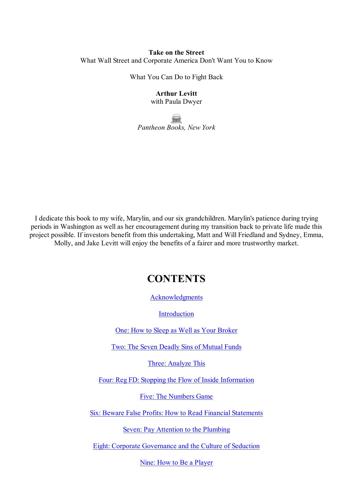
file:///C:/Documents%20and%...
by
vpavan
Knight grew rapidly because it paid brokers for orders— called payment for order flow— while Schwab engaged in a practice called "internalization," in which buy and sell orders are matched internally. Both practices are problematic. Payment for order flow gave brokers an incentive to search out the highest bidder for their customer orders, rather than the market center that offered the best possible execution of investor orders. And internalization means that a large chunk of orders is cordoned off from the rest of the market, possibly denying investors a more favorable execution in another location. In both cases— payment for order flow and internalization— the market-makers were matching, but rarely beating, the market's best advertised price.
…
These are the companies, such as Schwab and Knight Trading, that had nearly cornered the market in order flow. Suddenly, orders are less valuable now that spreads have shrunk to a penny— and sometimes even less on ECNs. This, in turn, has caused payment for order flow to decline. The result is that Knight, Schwab, and others are now doing the opposite of payment for order flow and are asking brokers to pay them a commission to execute their orders. In a matter of months, the wholesalers went from being kings of the hill to having to rethink their business models. If market-makers earn a commission rather than profit from the spread, that could be a positive development.
…
You can see your order in the quote, and watch how it's executed. Payment for order flow has declined because of decimals, but be sure to ask your broker if his firm is receiving any payments or other inducements to steer orders to a particular market center. If so, ask your broker to justify why that market center is superior to others. Also, ask your broker why he's not rebating some or all of that payment to you, the customer. At the very least, you should expect your broker to try to get you a better price on your limit order in exchange for the payment for order flow. After all, it's your money that's being kicked back.
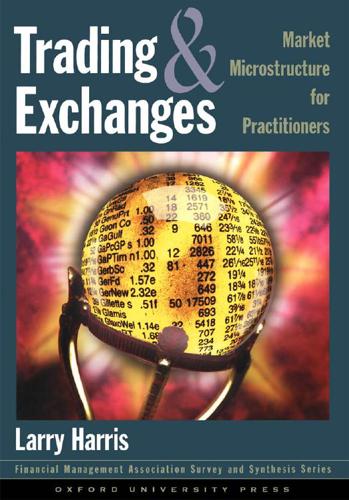
Trading and Exchanges: Market Microstructure for Practitioners
by
Larry Harris
Published 2 Jan 2003
Consequently, private pension plans do not generally negotiate commission recapture agreements. 7.3.1.2 Payments for Order Flow Payments for order flow are payments that dealers make to brokers to obtain orders from their clients. For many retail-based securities brokers, payments for order are a very significant source of transaction-based revenue. For example, in 1997, they represented 24 percent of total transaction revenue (commissions plus payments for order flow) at E*TRADE. Their importance has since dropped, however; dealers now pay less for order flow because decimalizaton has narrowed their spreads. In the second quarter of 2001, E*TRADE’s payments for order flow had dropped to 15 percent of transaction revenue 7.3.1.3 Interest Brokers earn interest on the margin loans that they make to their clients.
…
Brokers route orders to dealers who provide them with good service, who provide good prices to their clients, and who pay them for the order flow. Brokers who own dealer subsidiaries often route orders to their subsidiary dealers when they internalize orders for execution. Payments for order flow are pecuniary and nonpecuniary inducements that dealers offer brokers in exchange for their order flows. Sometimes in lieu of payments for order flow, two broker-dealers will exchange order flows. A broker whose dealer subsidiary does not deal in a particular instrument will route orders in that instrument to a broker-dealer who does. The other broker-dealer will reciprocate by sending orders that the first broker-dealer trades.
…
The dealer gives the broker some consideration—the kickback—in exchange for the opportunity to cheat the client. The dealer may pay the kickback in cash or with nonmonetary considerations. Brokers often arrange to send dealers order flow in exchange for monetary or nonmonetary payments. Although these payments for order flow arrangements appear a lot like kickback schemes, they generally are not. We discuss the economics of payments for order flow in chapter 25. 7.5.5 Unauthorized Trading and Churning Brokers engage in unauthorized trading when they make trades for their clients that their clients have not authorized. Brokers generally make these trades to generate commissions or to manipulate prices.
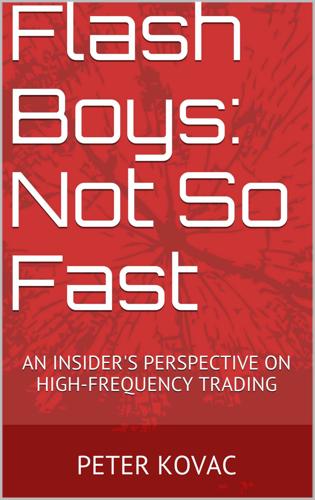
Flash Boys: Not So Fast: An Insider's Perspective on High-Frequency Trading
by
Peter Kovac
Published 10 Dec 2014
On the other hand, if high-frequency trading actually does perform a “valuable service,” IEX will see them trading actively on the platform. Thus, we now have an experiment to test the Lewis hypothesis. When IEX officially launches later in the book, we will see the first data and, if we are lucky, have a chance to test his hypothesis. Shining a Light on Payment for Order Flow I’m not a big fan of “payment for order flow.” This is the term used in the industry for a business arrangement where broker A pays retail broker B to send broker B’s customer orders to broker A, instead of to the public markets. I understand the arguments in favor of the practice – that customers sometimes get better prices than they would obtain in the public markets, and that it reduces costs for the customers’ brokers and this is theoretically passed through to customers – but I still find it troubling.
…
If an exchange has the sole best price in the stock one wants to trade, one is obligated to trade on that exchange. In contrast, one is never required to trade on a dark pool. Brokers and professional traders must actively choose to connect to and trade on a dark pool. Unfortunately, retail investors aren’t offered a choice. Their broker may send their orders to another broker (“payment for order flow,” which we’ll cover in Chapter 6), to a dark pool, or to a public exchange. The main argument in favor of dark pools has been that being “dark” allows a trader with a very large order the ability to hide his intentions from the general market and hopefully mitigate the “price impact” of his trade (at least until he is done).
…
With “free internalization,” the banks still get the first look at their customer’s orders on IEX, even if other brokers were ahead of them in the queue. The banks can still internalize the orders, but now it looks external. Best of all, it’s free, and they can bask in the good press coverage. The catch is that if the bank chooses not to trade against their customer order, they can’t sell it off to the next guy in the payment-for-order-flow cascade – instead, everyone else (in the dark pool at least) has a shot at filling the order. The banks win, IEX wins, and other traders on IEX win. The public markets, not so much. On the other hand, it’s far better than the status quo of internalization and banks trading in their own dark pools.[104] The Market is Rigged.
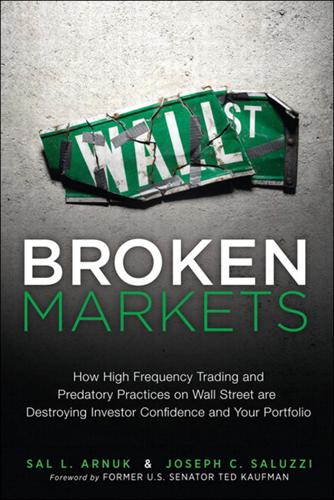
Broken Markets: How High Frequency Trading and Predatory Practices on Wall Street Are Destroying Investor Confidence and Your Portfolio
by
Sal Arnuk
and
Joseph Saluzzi
Published 21 May 2012
Conflicts of Interest The rapid growth of Direct Edge and BATS was attributable to their ability to attract high volume HFT order flow, largely because they were majority owned by players with HFT interests. As a result, practices that clearly smacked of conflicts of interest began to creep into everyday trading that affects retail and institutional investors. Two good examples are how payment for order flow (PFOF) and flash orders are used. For years some of the owners of Direct Edge understood the value of buying online brokerage account investor orders. These orders could be financially modeled to separate the “smart” orders from the “dumb” ones that could be traded against for profit. When you send an order to buy a stock through your online broker, most of the time that order is sold to such market makers.
…
When your execution receives a sub-penny price improvement, it is probably because your order was sold by your broker to an internalizer or routed to a dark pool that has intercepted your order before it could go to the displayed market and receive an even better price. Most online brokers use a smart order router to execute your trades. The router is smart for them because they can maximize their payment for order flow, but it is not necessarily smart for you. Did you ever try posting a buy limit order on the bid and wonder why your order seems to always be last to get executed? Most likely your broker routed the order to an exchange that pays him the largest rebate. This larger rebate means that your order sits on an exchange that is most likely last to interact with cost-minimizing broker smart routers.
…
Rule 606 states: “Every broker or dealer shall make publicly available for each calendar quarter a report on its routing of non-directed orders in NMS securities during that quarter.” Be on the lookout for an abnormally high percentage of orders executed on one venue. This may be good for your broker and the payment for order flow that it receives, but it may compromise your order. • Ask where your order has been executed: Rule 606 also states, “Every broker or dealer shall, on request of a customer, disclose to its customer the identity of the venue to which the customer’s orders were routed for execution in the six months prior to the request.”
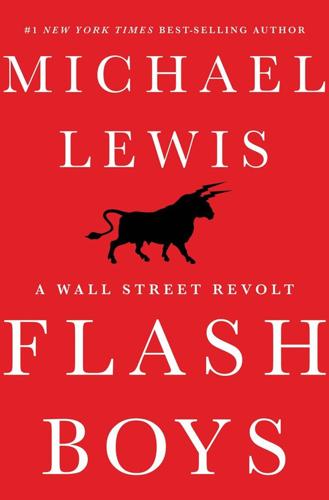
Flash Boys: A Wall Street Revolt
by
Michael Lewis
Published 30 Mar 2014
Rowe Price’s buy and sell orders had a great deal of power over how and where those orders got submitted. The firms were now paid for sending orders to some exchanges and billed for sending orders to others. Did the broker resist these incentives when they didn’t align with the interests of the investors he was meant to represent? No one could say. Another wacky incentive was called “payment for order flow.” As of 2010, every American stockbroker and all the online brokers effectively auctioned their customers’ stock market orders. The online broker TD Ameritrade, for example, was paid hundreds of millions of dollars each year to send their orders to a high-frequency trading firm called Citadel, which executed the orders on their behalf.
…
Their average trade size was twice the market average, despite the efforts of other Wall Street banks to undermine them. IEX represented a choice. IEX also made a point: that this market which had become intentionally and overly complicated might be understood. That, to function properly, a free financial market didn’t need to be rigged in someone’s favor. It didn’t need in some sick way the kickbacks, and payment for order flow, and co-location, and all sorts of unfair advantages handed to a small handful of traders. All it needed was for the men in the room and other investors like them to take responsibility for understanding it, and then to seize its controls. “The backbone of the market is investors coming together to trade,” said Brad.
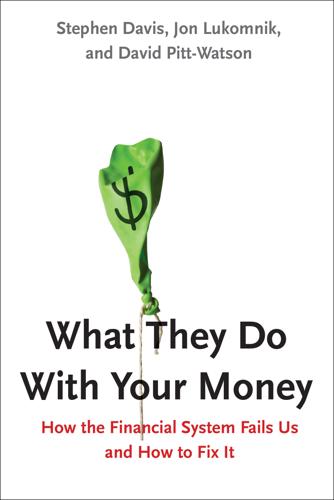
What They Do With Your Money: How the Financial System Fails Us, and How to Fix It
by
Stephen Davis
,
Jon Lukomnik
and
David Pitt-Watson
Published 30 Apr 2016
So that it can run an internal high-frequency trading program. It paid TD Ameritrade some $236 million in 2013.9 Nor is that an anomaly. Payments for order flow that year included about $100 million to Charles Schwab and $75 million to E*Trade. Ultimately, all these costs are a cost to other investors. As the Wall Street Journal notes, critics of the practices think “the arrangements can skew the priorities of brokers and sometimes result in a less than ideal outcome for investors.”10 High-frequency trading, payment for order flow, and internal pools at hedge funds are all very efficient if looked at from the point of view of the immediate participants, but they provide little for the companies seeking money to invest, and the savers seeking a return who are the ultimate customers.
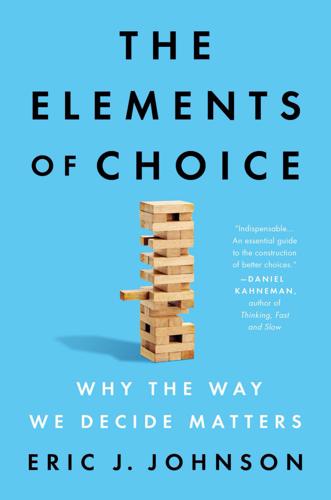
The Elements of Choice: Why the Way We Decide Matters
by
Eric J. Johnson
Published 12 Oct 2021
What this means to customers is complex, but what is clear is that this arrangement means that Robinhood (and potentially other commission-free brokers) makes more money if you trade more, and even more if you trade options. Not everyone takes a payment for order flow. Fidelity Investments passes all its share of the spread to its customers, and in the United Kingdom, payments for order flow are banned by the Financial Conduct Authority. 12. Popper and Merced, “Robinhood Pays $65 Million Fine to Settle Charges of Misleading Customers.” 13. You need to be certified by Robinhood, like in many financial services firms, to trade some kinds of options, but simply stating you have experience in trading options is often enough to get certified, and approval can happen in as little as ten minutes. 14.
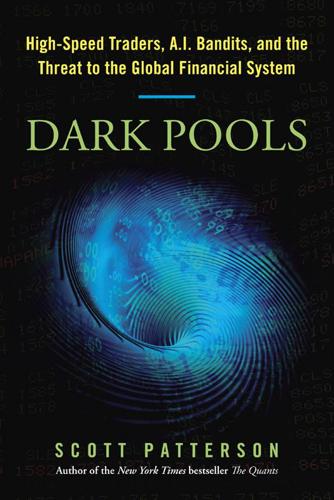
Dark Pools: The Rise of the Machine Traders and the Rigging of the U.S. Stock Market
by
Scott Patterson
Published 11 Jun 2012
Ameritrade had a deal to send most of its orders to Knight Securities, a computer-savvy broker dealer based in Jersey City. Knight paid Ameritrade for the orders, in return promising to provide a good execution for the trades. In the industry, this was known as payment for order flow, a practice none other than Bernie Madoff had pioneered years before. Island didn’t play the payment-for-order-flow game (though maker-taker was similar in that it provided a sweetener for traders to post orders), so Andresen had little to offer aside from promising fast execution. For Nagy, execution speed wasn’t enough to trump the hard dollars and cents Ameritrade got from Knight.
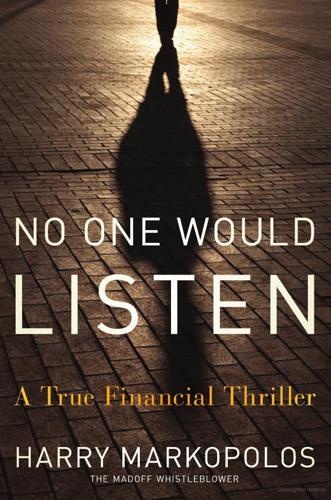
No One Would Listen: A True Financial Thriller
by
Harry Markopolos
Published 1 Mar 2010
Several people confided in me that they didn’t really know what he was doing, then point out that no one else on Wall Street had access to the quality of information he had, and no one generated the consistent returns he did. When those two facts were considered together, it seemed to make a strong argument that he was using his customer order flow to subsidize his hedge fund. Neil, who had done some analysis of payment for order flow when studying for his master’s in finance, believed it could truly provide Madoff an edge—but certainly not enough of an edge to generate the types of returns he was delivering. There were at least some people who told Neil and me, confidentially of course, that Madoff was using the hedge fund as a vehicle for borrowing money from investors.
…
Broyhill meets Scott Franzblau and mobsters on Ponzi scheme on Ponzi scheme vs. front-running post Bernie Madoff arrest public acknowledgment of role and Rene-Thierry de la Villehuchet on reporting to SEC on reverse engineering role of sailing disaster on SEC failure Wall Street Journal warns individual investors Casey, Judy Cattle trading scam Charles, Prince Chelo, Neil: business education of careers at Rampart continued activities of early career of impact of Bernie Madoff case on information gathering leaves Rampart OPRA tapes on payment for order flow on Ponzi scheme vs. front-running post Bernie Madoff arrest public acknowledgment of role on quants on reporting to SEC reviews strategy analysis role of talks to Amit Vijayvergiya Wall Street Journal warns individual investors Cheung, Meaghan Chicago Art Museum Chicago Board of Options Exchange (CBOE) Chinese vitamin suppliers scandal Citigroup Client redemptions Clinton, Hillary Cohen, Steve Collars Commodities straddle Commodity Futures Trading Commission Congress: Chuck Schumer call to SEC Harry Markopolos testimony investigation by SEC established by SEC in hearings by Congressional Record Contacts and relationships Cook, Boyd Correlation coefficient Corruption: as business as usual drug cartels incompetence vs.
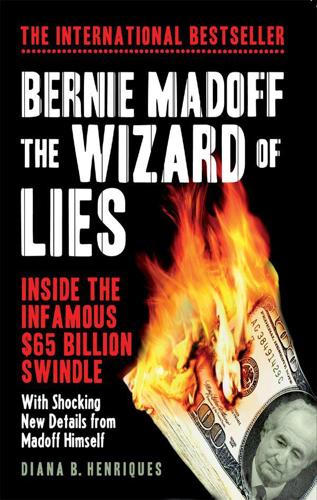
Bernie Madoff, the Wizard of Lies: Inside the Infamous $65 Billion Swindle
by
Diana B. Henriques
Published 1 Aug 2011
He would need it in the battle that would define Bernie Madoff for many veterans of Wall Street’s trading community—the battle over his practice, introduced in 1988, of paying retail brokerage firms a few pennies per share to steer their customers’ orders to him. He called those pennies “payments for order flow” and “rebates”. The exchanges that had traditionally gotten those orders, chiefly the New York Stock Exchange, called the payments “bribery, pure and simple” and “kickbacks”. They fought fiercely to have the practice declared illegal, but they ultimately lost the battle with regulators after the firms taking Bernie’s pennies were found to be getting faster and cheaper execution of their orders than on the Big Board.
…
Ezra, 4, 110–15, 117, 120–21, 132, 137, 148, 168, 175, 202–3, 214, 235 Madoff losses disclosed, 211 Merrill Lynch, 118, 167, 175, 191–92, 221, 271, 296 Bank of America merger, 194–95 middle-income investors, 125–30, 172–73, 195, 215–16, 257–58, 296–97, 307–8, 313 Mitterrand, François, 75 money market funds, 53, 195 Moragne, Maria, 15 Morgan Stanley, 118, 186, 192, 271 Morgenthau, Robert, 15 MorseLife Foundation, 191–92 mortgage default crisis, 177, 186–87, 193, 266, 301–2 mortgage derivatives, 177 Mukasey, Marc, 297–99 Muntner, Harry (grandfather), 30 Murdoch, Rupert, 89 Murray, Tim, 231 mutual funds, 42–44, 53, 76, 79, 106, 130, 142–43 NASD (National Association of Securities Dealers), 46, 142, 229 Board of Governors, 80, 86 regulation and, 46, 79, 83, 86–87 NASDAQ (National Association of Securities Dealers Automated Quotations), 46, 80, 176, 214 automation of, xxiv, 45–46, 68, 83–84, 116 crash of 1987, 83–84 Madoff as chairman of, 87 price-fixing scandal, 107–8, 178 tech-stock bubble, 116 Nash, John, 113 National Quotation Bureau, 26 new-issue market, 27–29 News Corporation, 89 New Times case, 261, 263, 307 New York City near bankruptcy, 63 New York City Center, 88, 183 New York Daily News, 212 New York Law School, 114 New York magazine, xx New York Mets, 3, 88, 148, 212, 215, 265, 319, 340 New York Post, xx New York State bankruptcy law, 256 New York State pension funds, 129 New York Stock Exchange (NYSE, “Big Board”), 24–25, 43, 49, 71, 82–83, 87, 118 New York Times, 57, 61, 242, 284, 319 New York University, 114, 202–3 Nierenberg, George, 252 Noel, Monica Haegler, 105–6, 109 Noel, Walter, Jr, 2–3, 89–92, 104–10, 166, 168, 174, 199, 202, 257 Nomura Bank International, 174 North Shore Long Island Jewish Hospitals, 137 Norton, Steven, 232 Oak Ridge Country Club (Hopkins, Minnesota), 67 Obama, Barack, 204, 213, 228–29 Ocrant, Michael, 117–19, 125, 131, 141, 144–45 Odyssey Partners fund, 113 O’Hara, Jerome, 309–10, 315 Old Naples Securities case, 261 Oppenheim, Appel, Dixon & Company, 167 OppenheimerFunds, 131, 167 Optimal funds, 150, 171, 178, 206–7, 211–12, 239, 255, 299 options trading, 75–76, 79, 81, 142, 170–71, 190–91, 196–97, 200 SEC investigation of 2005–6 and, 145, 157–59, 162–65 size constraints and, 93, 128 Ostrow, William David, 139–40, 143–46, 156 over-the-counter (OTC) market, 24–29, 49, 53, 67, 73, 163 automation of, 43–47 crash of 1987 and, 83, 86 Madoff losses of 1962 in, 28–29 price-fixing scandal and, 107–8 Pacific Stock Exchange, 39 Paul, Weiss, Rifkind, Wharton & Garrison, 9 Paulson, Henry, 193, 228 payments for order flow, 87, 92 pension funds, 24, 127–31, 171–73, 212, 215–16 Peretz, Martin, 213 Perez, George, 309–10, 315 Persico, Carmine, 332 Philadelphia Eagles, 4, 212 Phillips Nizer, 260 Philoctetes Center, 179 Picard, Irving H., 270 amount collected by, 305, 320, 327–28 assigned as Madoff trustee, 216–18, 222, 234–37, 239–40 claims approved by, 306, 327 clawback lawsuits and, 257–58, 266–67, 294, 311–15, 318–22, 324–25 feeder funds and, 300 foreign regulators and, 239 indirect investors and, 326 lawsuits vs.
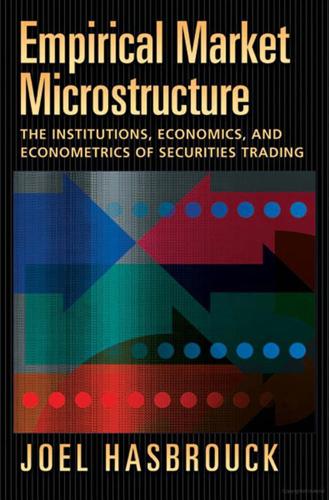
Empirical Market Microstructure: The Institutions, Economics and Econometrics of Securities Trading
by
Joel Hasbrouck
Published 4 Jan 2007
Analyzing a sample of NYSE limit orders, Harris and Hasbrouck (1996) assign a cost for canceled orders by assuming a hypothetical fill at the opposing quote prevailing at the time of cancellation. Expired orders are treated in a similar fashion. The execution of retail customer market orders in U.S. equity markets became an important issue in the early 1990s. Concern initially arose due to increased fragmentation, internalization, and payment for order flow. This established the context for numerous studies of comparative execution costs across venues. The earliest studies analyzed execution costs inferred from trade and quote data (as described in the next subsection). A small number of later publications report costs computed from order data (see Bacidore, Ross, and Sofianos (2003); Werner (2003)).

Cogs and Monsters: What Economics Is, and What It Should Be
by
Diane Coyle
Published 11 Oct 2021
Tucker, Paul, 2019, Unelected Power, Princeton, NJ: Princeton University Press. Turner, A., 2010, ‘After the Crises: Assessing the Costs and Benefits of Financial Liberalisation’, Speech by Lord Adair Turner, Chairman, UK Financial Services Authority, at the Fourteenth C. D. Deshmukh Memorial Lecture on 15 February, Mumbai. Van Doren, P., 2021, ‘GameStop, Payments for Order Flow, and High Frequency Trading’, Cato Institute, 1 February, https://www.cato.org/blog/gamestop-payments-order-flow-high-frequency-trading, accessed 6 February 2021. Van Reenen, J., 2018, ‘Increasing Differences Between Firms: Market Power and the Macro-Economy,’ CEP Discussion Papers 1576, Centre for Economic Performance, London School of Economics.
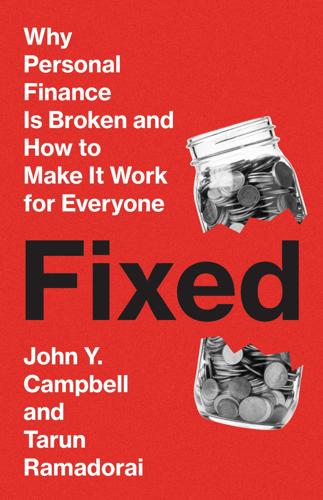
Fixed: Why Personal Finance is Broken and How to Make it Work for Everyone
by
John Y. Campbell
and
Tarun Ramadorai
Published 25 Jul 2025
A first problem with fintech is that it can be used to target human weaknesses—for example, to encourage gambling, performance chasing, or impulse buying. The case of Robinhood is instructive. This tech-enabled discount brokerage charges no commissions to investors, but it receives revenue (“payment for order flow”) from market makers keen to fulfill uninformed retail orders and earn a spread on their trades. Robinhood famously showered users’ screens with confetti when they successfully executed trades, “gamifying” their experience of trading, presumably to encourage more trading flow that could be sold to market makers.
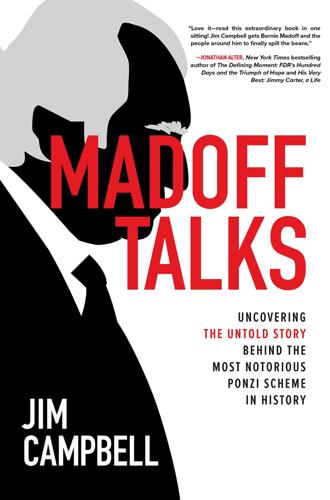
Madoff Talks: Uncovering the Untold Story Behind the Most Notorious Ponzi Scheme in History
by
Jim Campbell
Published 26 Apr 2021
The SEC allegations cited Robinhood for marketing its trades as commission-free and matching or exceeding its peers in pricing, while the brokerage actually delivered inferior trade prices that cost clients at least $34 million collectively in not getting best buy and sell prices, even when considering the free commissions. Robinhood was fined $65 million by the SEC. Madoff practically invented payment for order flow, but he never put BLMIS’ interests in front of his customers when it came to executing trades for customers in the market maker. This is a great example of how conflicts of interests lead Wall Street firms to screw their customers, in a way, ironically, that Madoff never would and was a constant critic of.)

You've Been Played: How Corporations, Governments, and Schools Use Games to Control Us All
by
Adrian Hon
Published 14 Sep 2022
Users trading Dogecoin cryptocurrency alone contributed a whopping 6 percent of the company’s entire revenue during the first quarter of 2021. To Robinhood, the stock market is a game, and they want everyone to play.57 Since Robinhood offers commission-free trading, it uses another way to make money called “payment for order flow” (PFOF).58 This mechanism is not especially unusual, but because PFOF means Robinhood gets paid whenever a user makes a trade, the company is strongly incentivised to encourage its users to make as many trades as possible.59 Perhaps this is why the secretary of the Commonwealth of Massachusetts charged Robinhood for the “use of strategies such as gamification to encourage and entice continuous and repetitive use of its trading application” in late 2020.60 Robinhood and gamification have been linked many times, and one of the most influential was in a memo for members of the House Financial Services Committee preceding their February 2021 hearing.61 The reason for the hearing?

The Quiet Coup: Neoliberalism and the Looting of America
by
Mehrsa Baradaran
Published 7 May 2024
Small volume traders using Robinhood’s accessible and easy platform described the GameStop event as a David and Goliath standoff where the Davids won through collective action. When Robinhood halted trading amid a massive demand for meme stocks, it was revealed that the app was profiting from customer trades by selling payments for order flow (essentially, a commission made by the broker for routing trade exchanges to a particular market to large traders, including hedge funds like Citadel Capital—incidentally one of the meme-stock investors’ prime targets). It was hedge funds all the way down. A year after the WSB revolt fizzled, Mat Bowen, a Dogecoin, AMC, and GameStop trader with a divinity degree from Princeton University, told The New York Times that he was willing to “ride these stocks to zero … for my fellow citizens.”